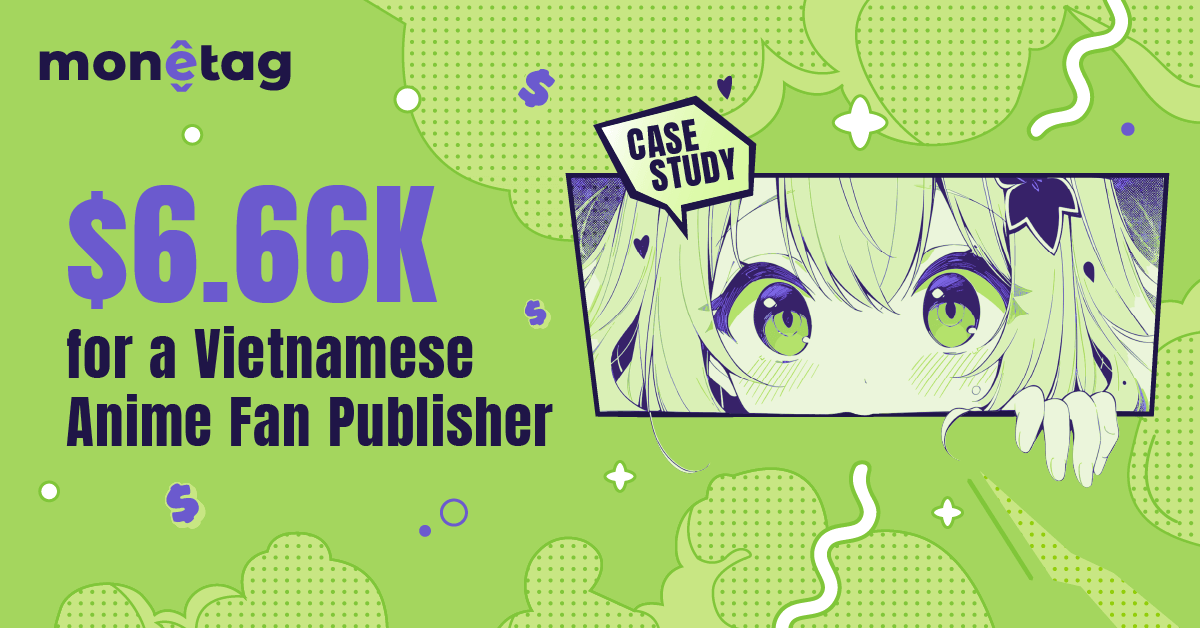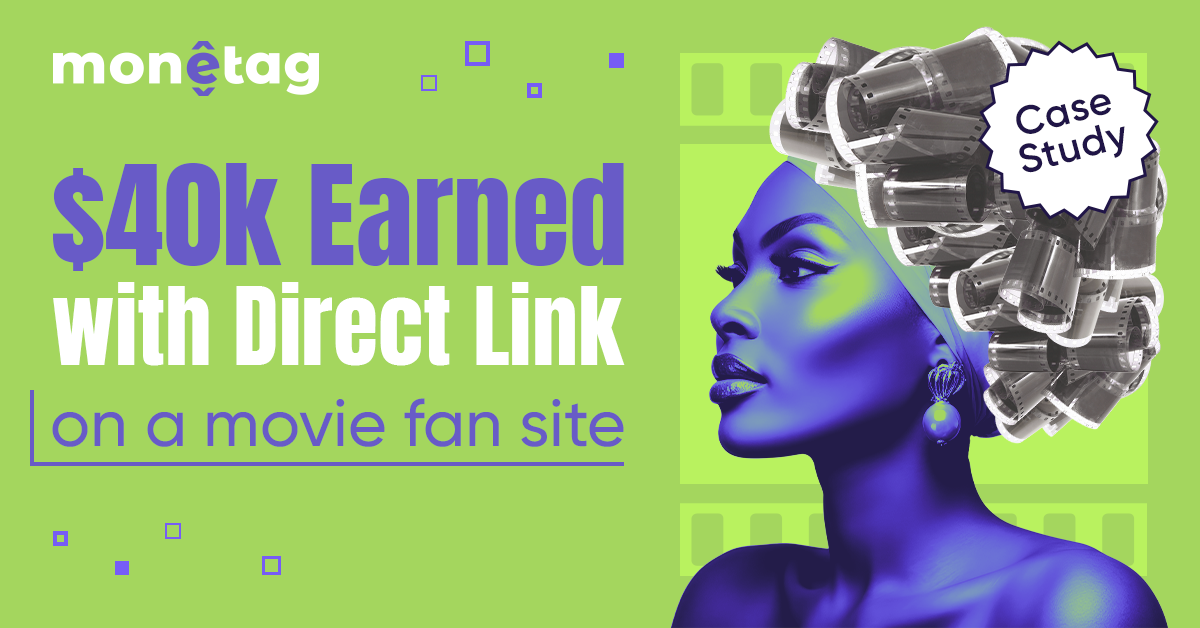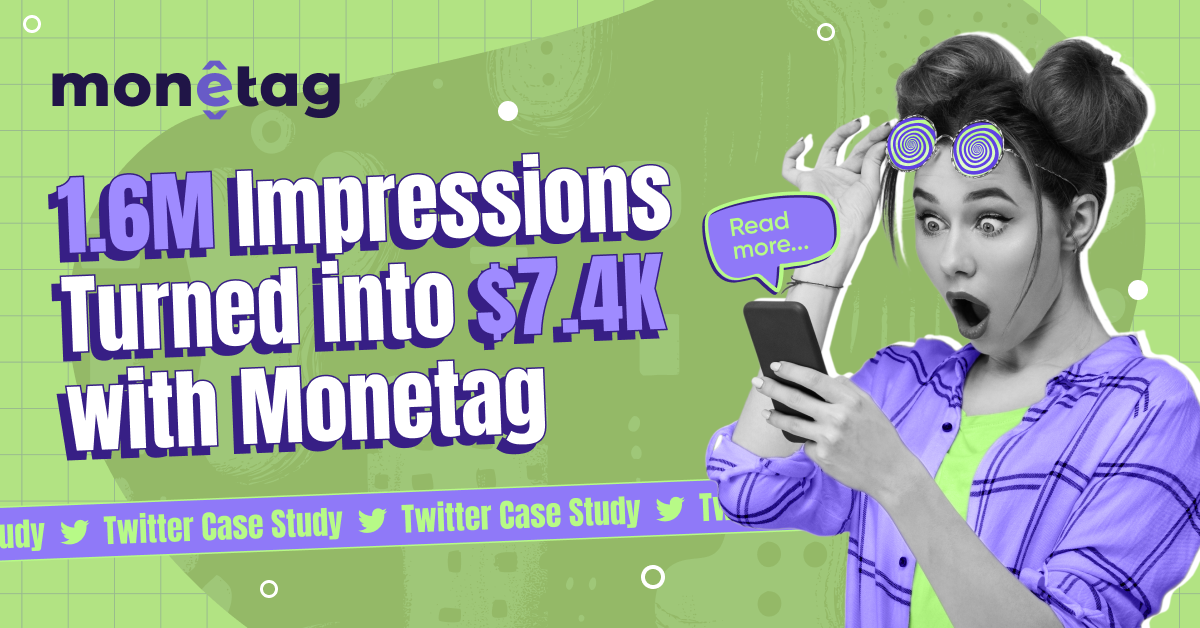Adsterra Alternatives: High CPM Ad Networks to Try in 2026

You know what? If you’ve been trying to make money from your website, you’ve probably come across Adsterra ads. That’s what Adsterra does best: they throw different types of ads at your visitors and hope something sticks.
So what exactly is Adsterra? Think of it as a big marketplace where website owners meet advertisers. Adsterra advertising network has been around since 2013, connecting publishers (that’s you) with companies that want to advertise.
However, Adsterra – just like any other platform – is not perfect for everyone. As a website owner, you might begin looking for other options if you run into some issues:
- The money isn’t great. Sure, Adsterra advertises good CPM rates, but some publishers find they’re not earning as much as they hoped, especially if they have good traffic from countries like the US or UK.
- Getting approved might not be as easy. While they’re not as picky as some premium networks, smaller websites might struggle to get accepted. And once you’re in, you might find you don’t have much control over what ads show up on your site – although the feed is definitely clean.
If you’re running a blog, news site, or any kind of niche website, these issues can affect your income. The good news is there are plenty of other options out there that might work better for your specific situation.
Summary of the best Adsterra alternatives
| Service | Why choose over Adsterra | Things to consider | Best for |
| Monetag | Easier to get started, more ad types, quick payouts | Strong for international traffic, easy setup | Small and medium sites |
| RevenueHits | Super easy approval, always shows ads | Ads might be pushy, lower pay sometimes | Brand new websites |
| HilltopAds | Better money, real people to talk to | Smaller company, fewer ads available | Sites that want personal help |
| PopAds | Pop-up specialists, good rates | Only does pop-ups | Entertainment and gaming sites |
| ExoClick | Welcomes non-mainstream content | Only for non-mainstream content | Non-mainstream entertainment |
| ClickAdilla | Good rates, growing fast | Still pretty new | Publishers who like trying new things |
| RichAds | Push notification experts | Only push notifications | Sites with engaged readers |
1. Monetag: The best Adsterra alternative for publishers
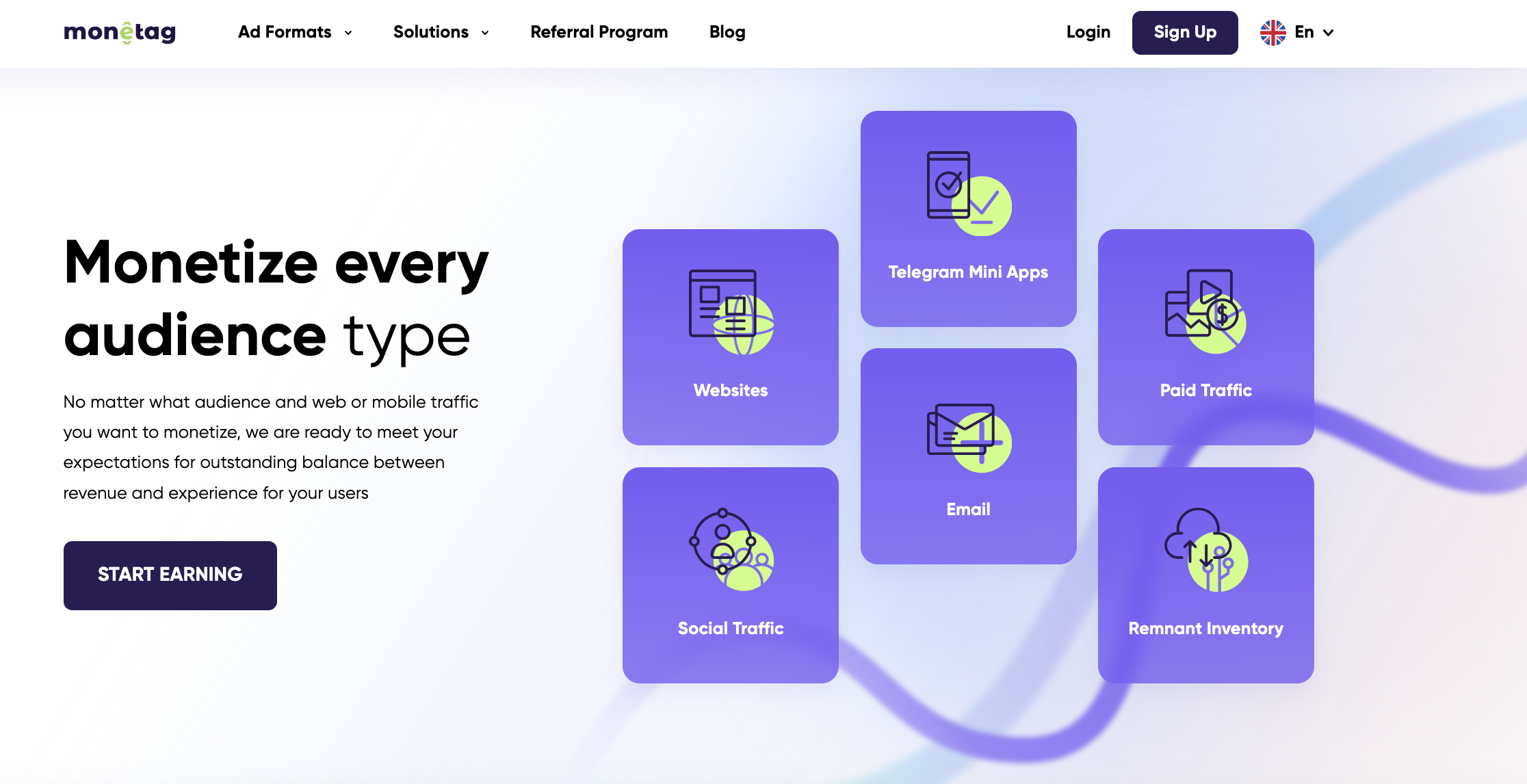
When people ask about alternatives to Adsterra, Monetag usually comes up first in conversations. There’s a really good reason for that – they just make things easier for website owners, whether you’re just starting out or you’ve been doing this for years.
Why Monetag can work better than Adsterra for most sites
The biggest difference? You don’t need a massive website to get started with Monetag. While other networks want you to have millions of visitors before they’ll even talk to you, Monetag welcomes smaller sites with open arms. This makes it perfect for bloggers who are still growing their audience.
They also give you way more options for making money. Instead of just the basic ad types, you get push notifications, in-page push, vignette banners, smartlinks, popunders – and even ads for Telegram Mini Apps, if you run one. It’s like having a whole toolkit instead of just a hammer. You can try different things and see what your visitors respond to best.
The payment system is refreshingly simple. You can get paid weekly starting from just $5. Compare that to networks that make you wait months or need hundreds of dollars before you see a penny. For small publishers, this quick access to earnings makes a huge difference in cash flow.
What really sets Monetag apart is how well they work with international traffic. Lots of networks focus mainly on US visitors and basically ignore everyone else. Monetag has advertisers from all over the world, so whether your visitors come from Brazil, India, or anywhere else, you’ll still make decent money.
They take security seriously too, scanning every ad campaign for malware and fraud. This protects both you and your visitors, which builds trust over time. Setting everything up is straightforward – they support different integration methods, so you don’t need to be a tech expert to get started.
What makes Monetag special
Monetag really shines for small publishers who don’t want to jump through hoops just to start earning. Growing websites love how they can scale up their monetization as their audience grows, trying different ad formats along the way.
Even experienced publishers often use Monetag alongside their main networks because it’s such a reliable backup income source.
Who should definitely try Monetag
If you’re running a small website and other networks keep rejecting you, Monetag is probably your best bet. They’re also great for sites that get visitors from all over the world, not just English-speaking countries. Content creators, mobile app developers, and anyone with an international audience typically see really good results. Of course, big publishers are welcome, too, so it’s basically for everyone.
What’s more, you don’t even need a site to monetize with Monetag: it’s Smartlink makes a nice match with social traffic from Facebook, Twitter, or other networks.
Real results from actual publishers
Publishers love sharing their success stories with Monetag, and the results are pretty impressive.
2. RevenueHits
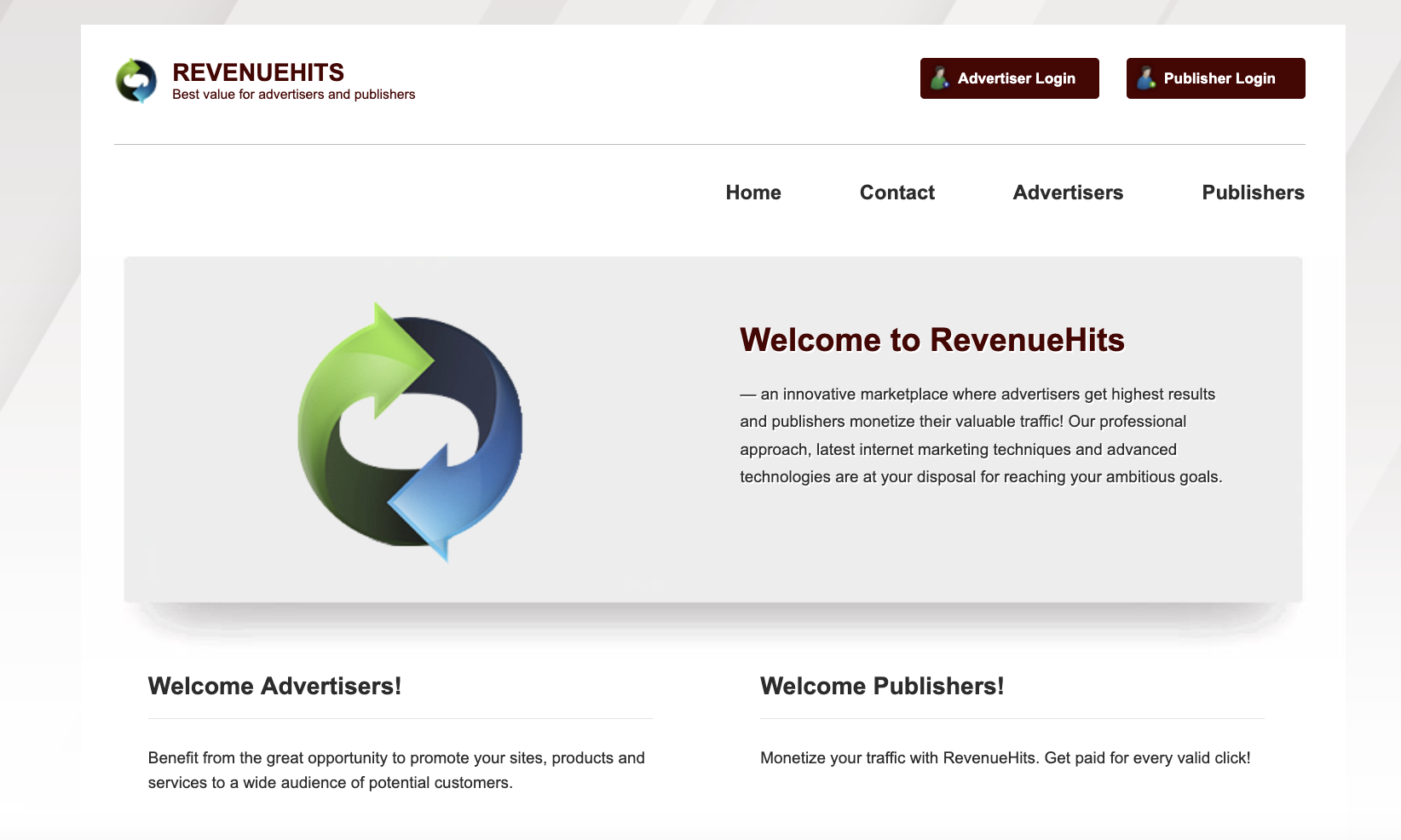
RevenueHits has been helping website owners make money since 2008, and they’ve built their reputation on being the ‘yes’ network. While Adsterra can be picky about who they accept, RevenueHits basically approves everyone with a legitimate website.
Why RevenueHits can be better than Adsterra for beginners
Getting approved is ridiculously easy. You don’t need perfect content, thousands of visitors, or even a professional-looking website. Most people get approved the same day they apply, which is pretty rare in this industry.
They promise something called 100% fill rates, which means your ad spaces will always show something.
RevenueHits uses a different payment system called CPA (cost per action). Instead of getting paid when someone clicks an ad, you get paid when they actually do something – like sign up for a service or buy something. When it works, this can pay much better than regular clicks.
Things to keep in mind with RevenueHits
The CPA payment system can be a double-edged sword. When visitors take the actions advertisers want, you make great money. But if your traffic doesn’t convert well, your earnings might be lower than expected. It’s less predictable than simple click-based payments.
Some of their ads might look pretty pushy: pop-ups and similar formats can be annoying if you’re not careful about how many you show. The minimum payout is $50, which is higher than some alternatives, but they pay reliably through PayPal, Payoneer, or bank transfer.
Who should try RevenueHits
Brand new publishers who can’t get approved anywhere else will love RevenueHits’ open-door policy. Small websites that want guaranteed ad coverage benefit from never having empty ad spaces.
If you don’t mind experimenting with different ad types to see what works, RevenueHits gives you plenty to test.
3. HilltopAds
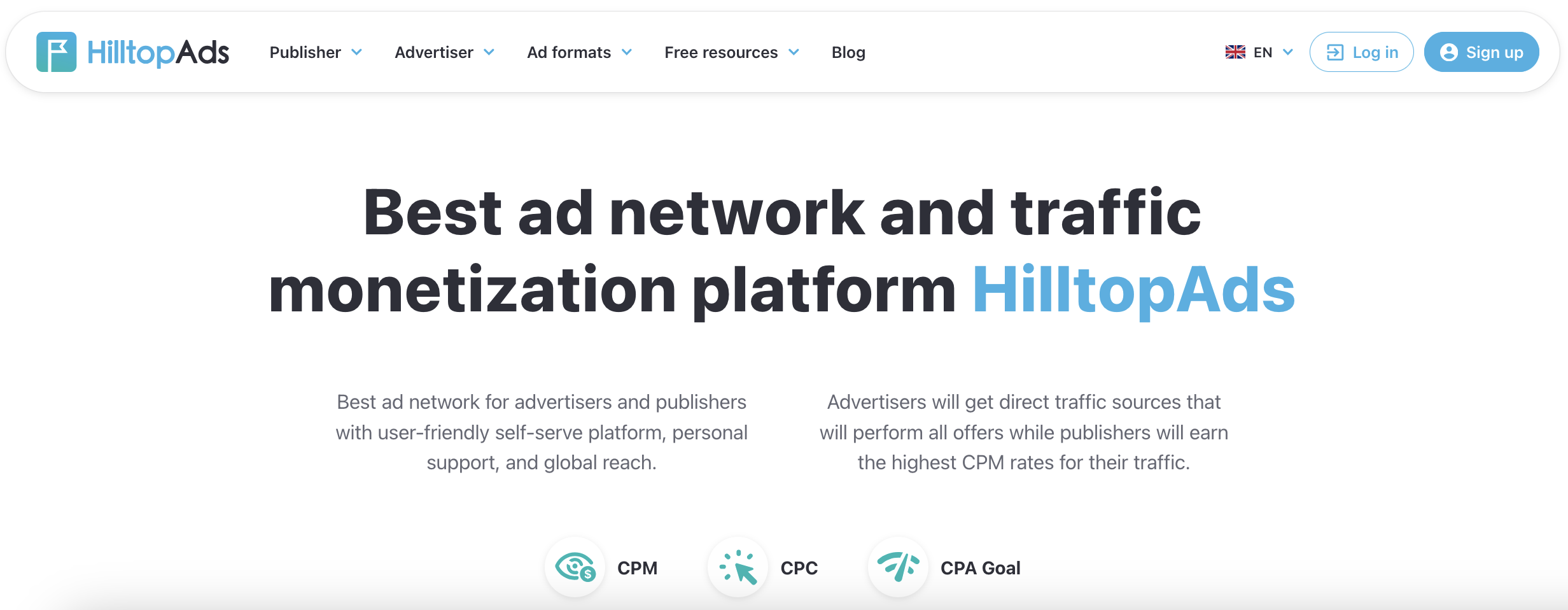
HilltopAds feels more like working with a small local business than a massive corporation. While Adsterra handles thousands of publishers through automated systems, HilltopAds still believes in personal relationships and actually talking to their publishers.
Why publishers love HilltopAds’ personal approach
When you work with HilltopAds, you get a real person as your account manager. Not a chatbot, not a ticket system – an actual human being who learns about your website and helps you make more money. When problems come up, you can call or email someone who knows your situation.
The approval process includes real human review, which might seem old-fashioned but actually works better. Instead of getting generic advice, you get specific recommendations for your particular website and audience.
What to expect with HilltopAds
Being smaller means HilltopAds can’t always fill your ad spaces as consistently as massive networks like Adsterra. This is especially true if you have very specific traffic or visitors from countries where they don’t have many advertisers.
They don’t offer as many different campaign types as the bigger networks, but what they do offer tends to be higher quality. The personal approach also means things move slower – you won’t see instant changes, but the long-term relationship building often pays off.
Who fits best with HilltopAds
Publishers who prefer working with real people instead of automated systems like HilltopAds. If you want someone who actually knows your website and can give personalized advice for growing your revenue, this personal touch makes a real difference in results.
4. PopAds

PopAds does exactly one thing, but they do it really, really well. If pop-up ads are your main way of making money, or if you want to focus entirely on this format, PopAds beats pretty much everyone else, including Adsterra.
Why PopAds dominates pop-up advertising
Since they only do pop-ups, everything about their system is designed to make pop-up ads work better.
They use real-time bidding, which means advertisers compete against each other for your traffic. This competition drives up the prices you get paid, often significantly higher than fixed-rate alternatives. When multiple advertisers want your visitors, you win.
Getting paid is straightforward with multiple options and reasonable minimum amounts. They’ve been doing this long enough to have all the payment logistics figured out.
The trade-off with PopAds
You’re limited to just pop-up ads. If you want to show banner ads, push notifications, or anything else, you’ll need additional networks. This can complicate your setup, but many publishers find the higher pop-up rates worth the extra effort.
Pop-ups work best with certain types of websites – entertainment, games, downloads, and similar content. News sites or professional blogs might not see great results because their audiences typically don’t respond well to pop-up advertising.
You also need to be careful about user experience. Too many pop-ups can annoy visitors and hurt your search engine rankings, so finding the right balance becomes crucial.
Who should focus on PopAds
Entertainment websites, gaming portals, and high-traffic sites with engaged audiences often see excellent results with PopAds. If your visitors are used to seeing ads and don’t mind pop-ups, specializing in this format can be very profitable.
5. ExoClick
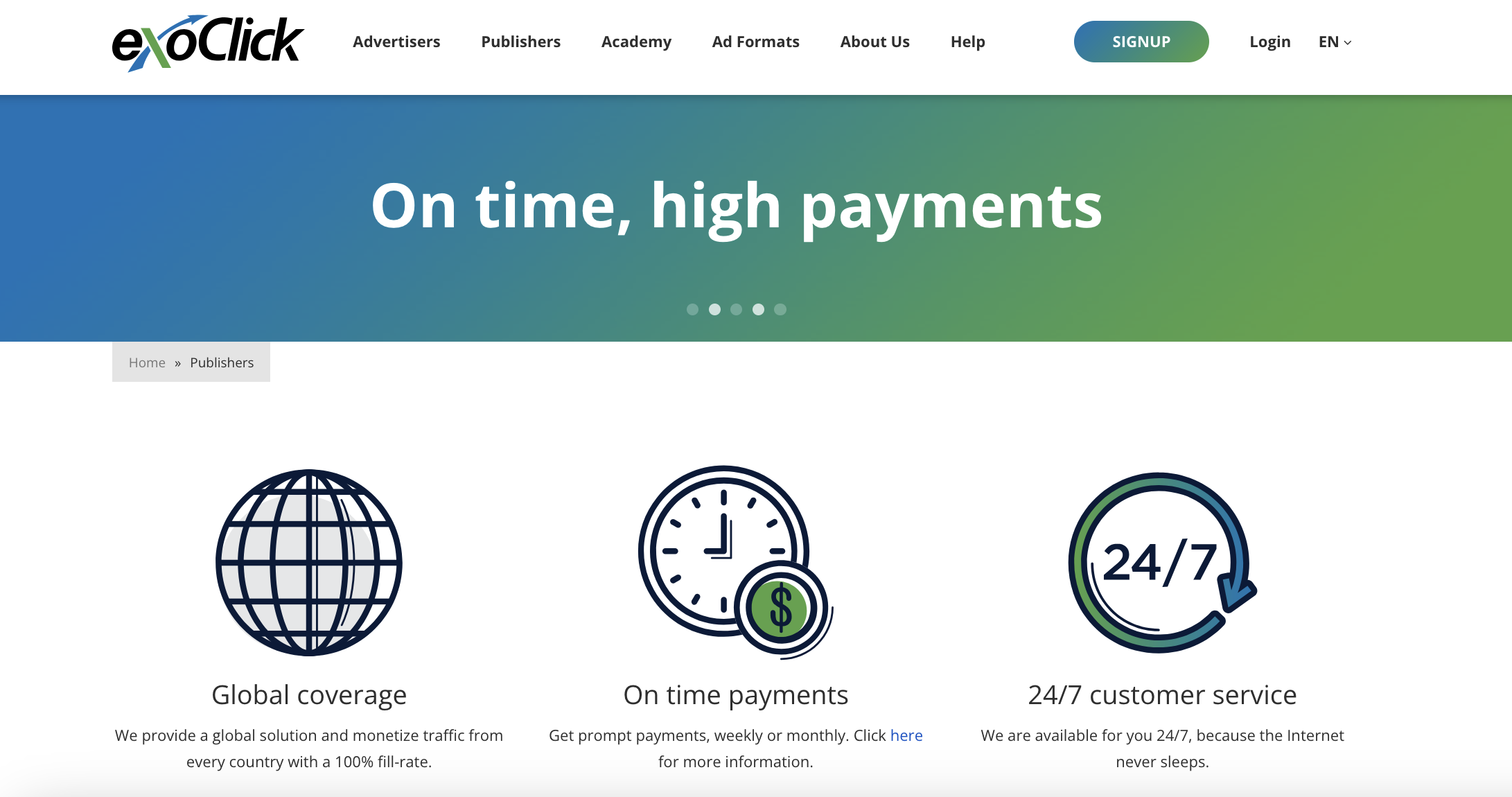
Most ad networks have strict rules against explicit content, but ExoClick welcomes it with open arms. If you’re running non-mainstream entertainment websites, dating platforms, or similar content, ExoClick might be your only realistic option for good monetization.
Why ExoClick works for non-mainstream content
Adult traffic often converts extremely well when matched with the right advertisers, and ExoClick has spent years building relationships with companies that specifically want to reach non-mainstream audiences. This specialized focus means higher payouts than trying to use mainstream networks that barely tolerate adult content.
They offer all the standard ad formats – banners, pop-ups, push notifications, and videos – but everything is optimized for adult audiences instead of being generic implementations that don’t work well for this niche.
The revenue potential typically exceeds what non-mainstream publishers can earn elsewhere because the advertising is properly targeted instead of being treated as an afterthought.
Important considerations for ExoClick
Their advertiser base focuses heavily on explicit products and services, so non-adult websites won’t find relevant campaigns. This specialization that helps adult sites creates limitations for general content.
Payment processing gets more complicated with explicit content due to banking regulations and payment processor restrictions. ExoClick handles this better than most, but non-mainstream publishers should expect some additional complexity compared to mainstream monetization.
You’ll also need to stay on top of legal requirements and platform policies, as rules for explicit content vary by location and change frequently.
Who needs ExoClick
Adult entertainment sites, dating platforms, and related content types that struggle with other networks will find ExoClick not just accepts their content but actively optimizes for better performance. Publishers in these niches often discover they can finally monetize properly instead of settling for scraps from mainstream networks.
6. ClickAdilla
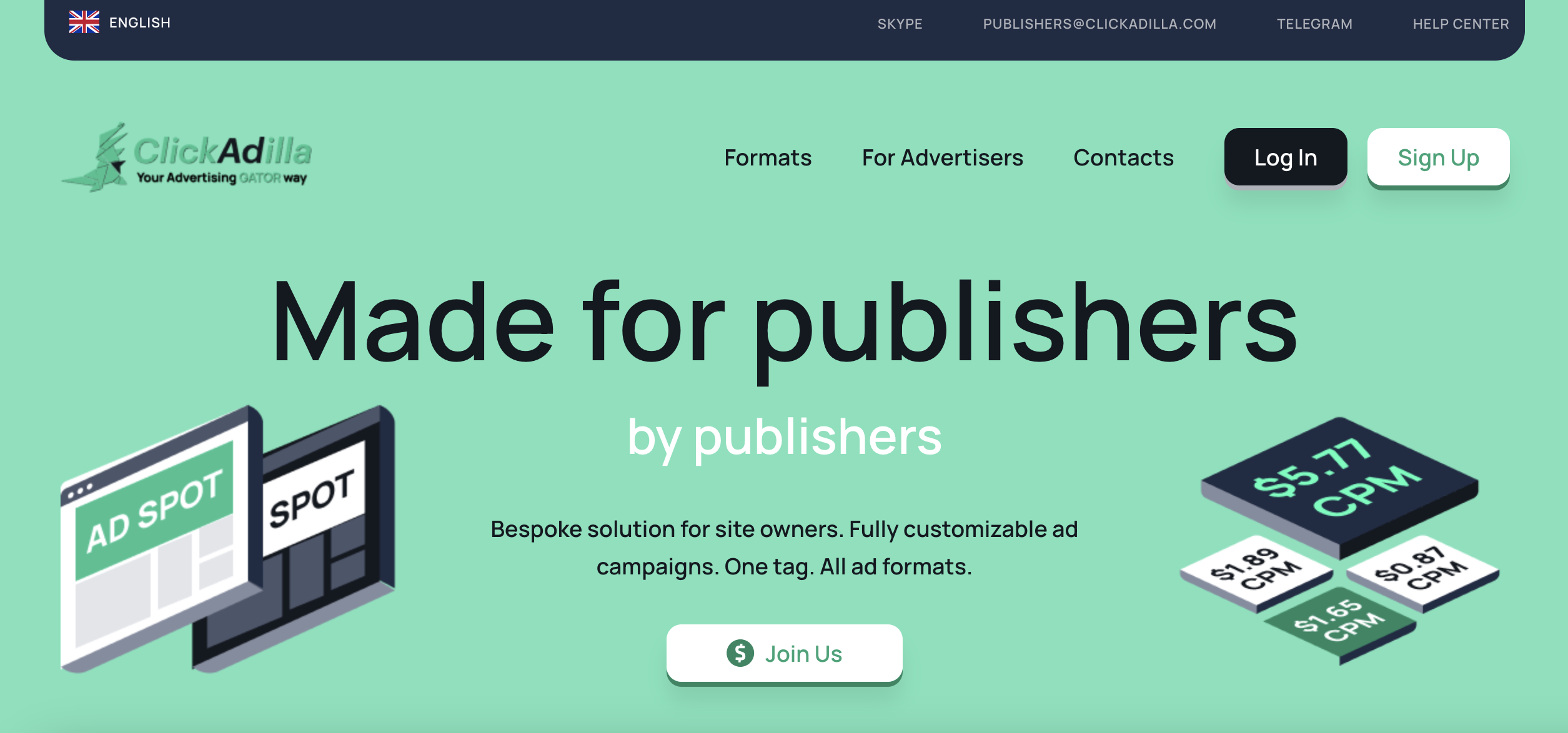
ClickAdilla is the new kid on the block, and they’re trying to win publishers over with competitive rates and policies that actually favor website owners. While they don’t have Adsterra’s track record, they’re making up for it with enthusiasm and better payouts.
Why publishers are trying ClickAdilla
They support multiple ad formats without the confusing complexity that some older networks have accumulated over the years. Everything feels more streamlined and easier to understand.
Getting approved happens quickly, and their support team actually responds to questions promptly. This agility is typical of growing companies that need to provide better service to compete with established players.
What to watch with ClickAdilla
Being newer means their advertiser base isn’t as developed as networks that have been around for years. This can lead to inconsistent fill rates and revenue, especially while they’re still growing their advertiser relationships.
Performance optimization might take more patience since they’re still building their data and algorithms. Publishers might need to spend more time testing and adjusting compared to networks with established systems.
Their reputation is still developing, which makes some advertisers and publishers hesitant to commit fully until they prove long-term reliability.
Who should test ClickAdilla
Publishers who like trying new platforms for potentially better rates will find ClickAdilla’s approach refreshing. If you’re not completely dependent on one network and can afford to experiment, getting in early with a growing network often leads to better treatment as they expand.
7. RichAds

Push notifications have been huge in recent years, and RichAds has built their entire business around this one format. Instead of trying to do everything like Adsterra, they focus exclusively on push notifications and do them well.
Why RichAds excels at push notifications
Since push notifications are all they do, they’ve optimized everything specifically for this format. You don’t have to educate them about how the format works or deal with generic advice that doesn’t apply.
Push notifications often pay better than traditional display ads, especially when you have engaged visitors who actually want to receive notifications instead of people who accidentally opted in.
Considerations with RichAds
If push notifications don’t work for your audience or content type, RichAds can’t help you with other monetization methods. This specialization that makes them great at push notifications creates limitations everywhere else.
Implementing push notifications properly requires careful attention to user experience and technical setup. Done wrong, they can hurt your search rankings or annoy visitors enough to drive them away permanently.
Success with push notifications depends heavily on having genuinely engaged visitors who are likely to interact with notifications rather than immediately dismissing them.
Who benefits from RichAds
Publishers with highly engaged audiences who willingly sign up for notifications see excellent results with RichAds. News sites, deal platforms, and content sites where people return regularly often find push notification monetization works much better than traditional advertising.
How to pick the right Adsterra alternative
With all these options available, choosing the best alternative really comes down to understanding your specific situation. Here’s how to think through the decision without getting overwhelmed by all the choices.
- Know your traffic and audience
Different networks work better with different types of visitors. High-volume international traffic often performs well with networks like Monetag that specialize in global reach. Smaller sites with super engaged audiences might make more money through personal service networks like HilltopAds, even if the total volume is lower.
- Be honest about your comfort with different ad types
Some publishers are comfortable with aggressive monetization like pop-ups, which can maximize revenue through specialized networks. Others prioritize user experience and prefer subtler advertising integration, even if it means lower immediate earnings.
- Think about your cash flow needs
Payment terms matter more than you might think. Weekly payments starting at $5 work completely differently than monthly payments requiring $100 minimums. New or growing publishers often need faster access to earnings to reinvest in content or marketing.
- Consider where your visitors come from
Network performance varies dramatically by geography. Some excel with US and European traffic, while others optimize for global audiences. Honestly assess your traffic sources and match them with networks that have strong advertiser demand in those regions.
- Decide how much help you want
Self-service platforms work great for publishers who enjoy testing and optimization. Managed services with personal account managers benefit those who prefer guidance and relationship-based support. This choice often determines both immediate success and long-term satisfaction.
Final thoughts
Look, Adsterra traffic monetization isn’t the only way to earn. They serve thousands of publishers and have built a solid business over the years. But that doesn’t mean they’re the right choice for your specific website and goals.
Whether you want higher rates, better fill rates, or more suitable ad formats, there are real options for every type of publisher. The key is being honest about what you actually need rather than just going with the biggest name or flashiest promises.
The smartest approach is testing one or two alternatives that match your situation. Start small, measure the actual results against your current earnings, and expand based on real performance data rather than marketing claims. Most successful publishers end up using multiple networks anyway, so think of this as building a diversified income stream rather than finding one perfect solution.

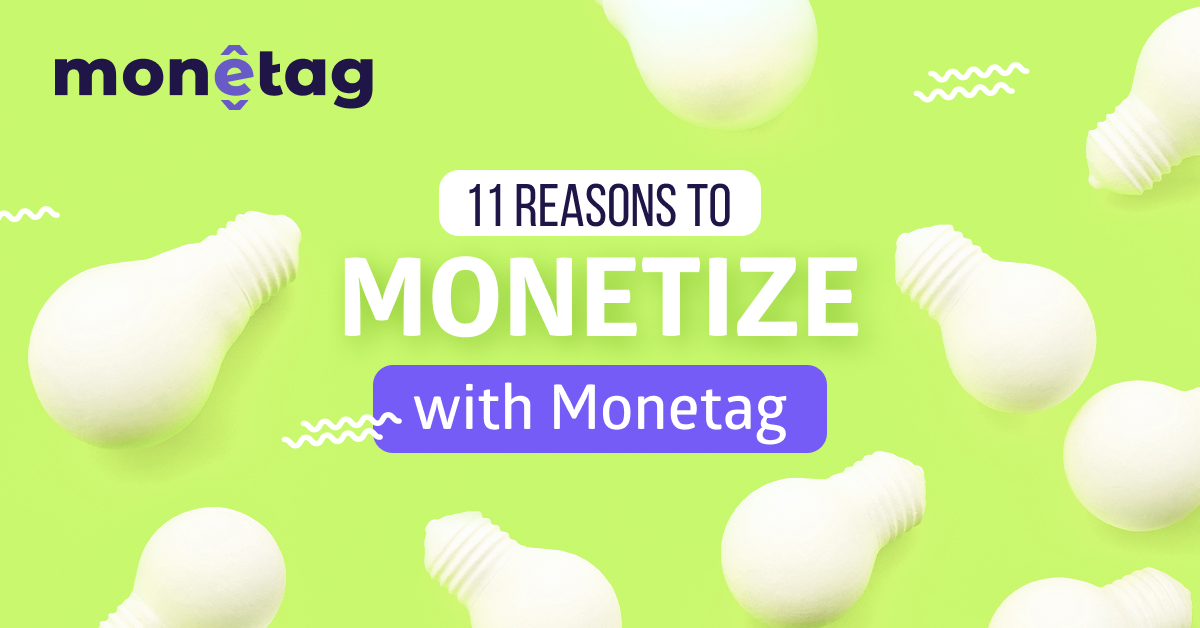



![How to Turn Tweets into Money: $8K in a Month, $45K in a Year [Case Study]](https://monetag.com/wp-content/uploads/2024/08/monetag-8K-in-a-month-45K-in-a-year.jpg)
